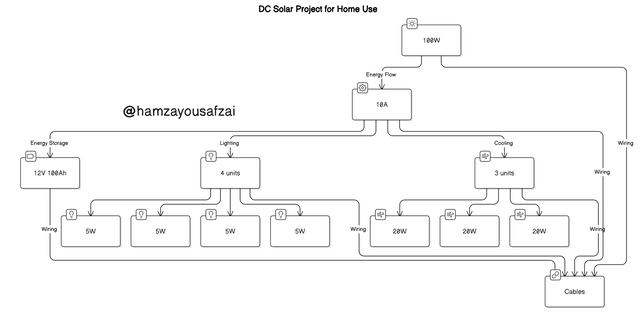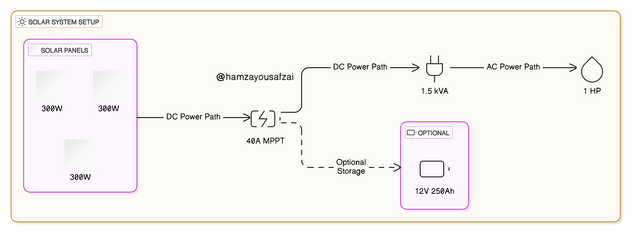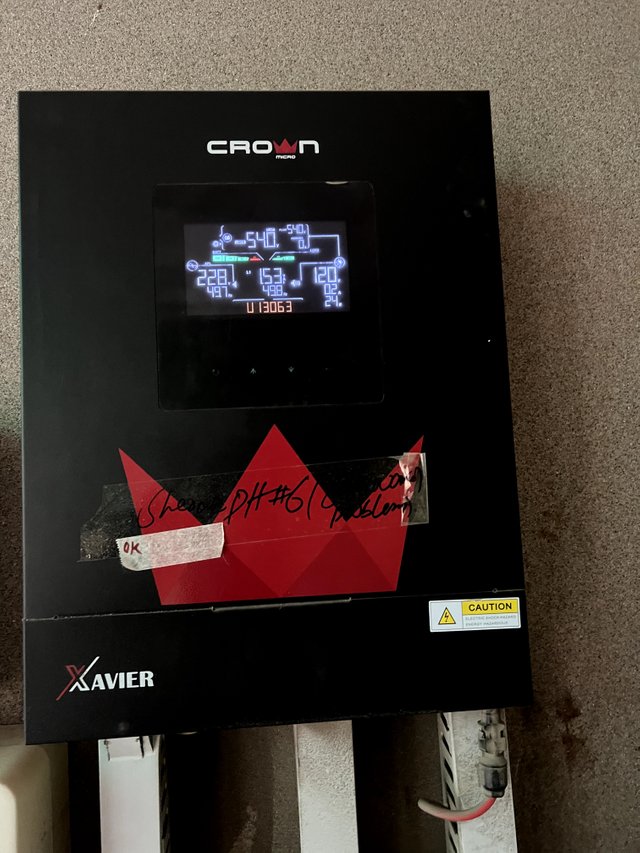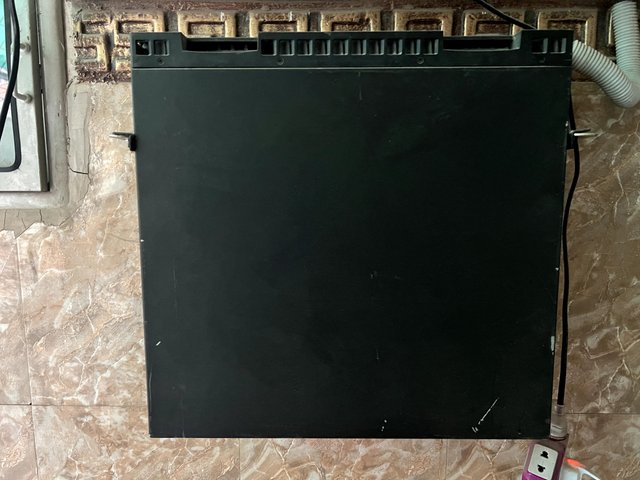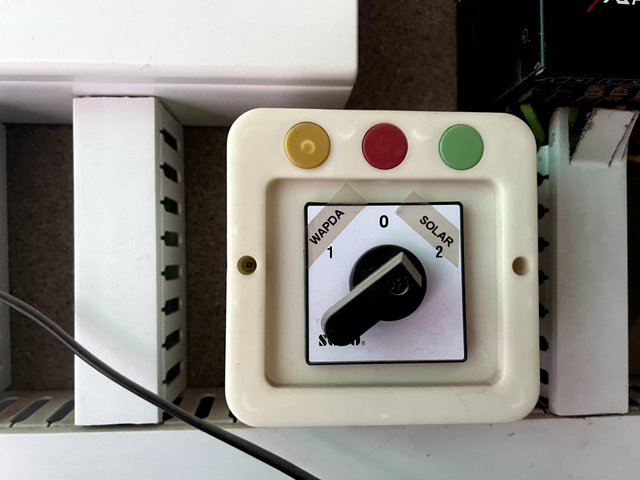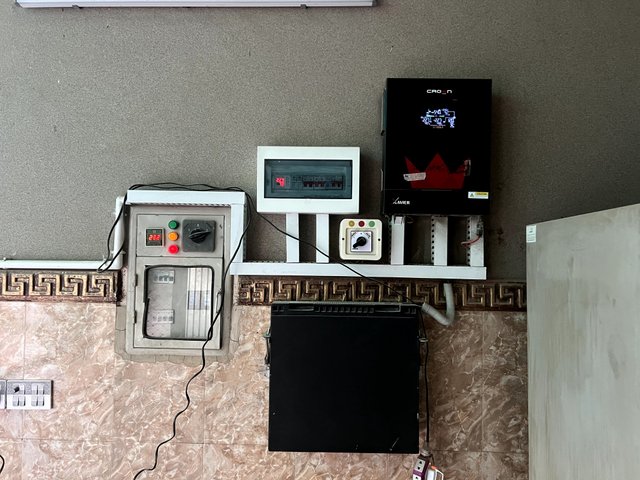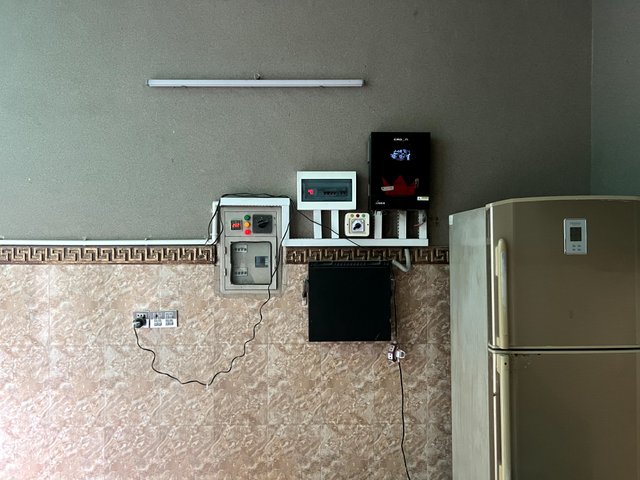SLC21/WK5: Introduction to Basic Solar Power
Hello everone i hope you all are good and enjoy your life. This week as part of the steemit Learning Challenge Week 05 I am excited to share my thought about Solar power. solar power is an clean and renewable energy source that can help reduce polution and save our planets. In my post I will explain how solar electricity works how to calculating the electricity we use at home and the difference between DC and AC solar system. I will also show how to design simple solar system Using real example.
A) Understanding solar Powers
Solar power is a clean and re newable energy source that used sun light to create electricity. The proces work through special devices called photovoltaic cells Which convert sun light into usable energy. Its a great way to reduced polution and protect the environments while saving on electricity cost.
After reading the lesson I learn that there are two main types of solar electricity: DC solar power and AC solar power.
- DC Solar Power is good for small electrical loads like DC lights and fans. Its cheaper to set up but it has some limitation because most household appliance run on AC power. For example if you only want to run a few DC fans and lights in a small room a DC solar system would work perfectly.
- AC Solar Power on the other hand is more suitable for larger electrical load. Most of the devices we use in our homes like air conditioner refrigerators and blenders run on AC power. This type of solar systems cost more to build but its more practicals for every day used.
The first step in seting up any solar system is to calculating the electrical load of your home. This means figuring out how much power your appliances use. for example if your house has three lights of 30 watt each and two fans of 70 watts each yours total power requirement would be
(3 × 30) + (2 × 70) = 230 watts
This information helps you choose the right solar components like panel batterie and controllers.
In the lesson I learned how to design an DC Solar System for smaller loads. For example if my house only uses three DC light and two fans I would need
- A 100 watt solar panel
- A 100AH battery to store energy for use at an night
- A 10 amp charge controller to manage the power flow
For larger loads like an air conditioner and other appliances an AC Solar System would be needed. This system requires
- A more powerful solar panel setup like three 100 Watt panels
- A 200AH battery for backup
- An 800VA inverter to convert DC electricity into AC electricity
The lesson also taught me the importance of choosing the right solar panel size. Its a good idea to gets a panel that is 20% more powerful than your total loads for example if your total loads is 200 watts you should use an 300 Watt panel to ensure smooth Operation even on cloudy day.
This lesson help me understand that solar power is not just about instaling panels its about carefuly planning and choosing the rights equipment to match your need. By switching to solar power we can reduce our dependence on fosil fuels and created an cleaner greener futured.
For instance if every home used solar panel for basic need like light and fan we could significantly reduce electricity bills and environmental pollution. Its a simple yet impactful way to contributed to an better planet
B) Differences Between AC and DC Solar Systems
| Criteria | DC Solar System | AC Solar System |
|---|---|---|
| Type of Power Output | Produces direct current electricity suitable for DC lights and fans. | Produce alternating curent (AC) electricity suitable for AC appliance like air conditioner and refrigerator. |
| Cost of Installation | Cheaper to install only requiring solar panel an battery and a charge controler. | More expensive to install as it requires a inverter to Convert DC to AC power. |
| Application and Usage | Best for small scale usage like powering lights and fan. | Ideal for larger-scale use in homes or business where most devices require AC power. |
C) My Home Load Calculation
| Electrical Elements Name | Quantity | Rate (Watt) | Total Power (Watt) |
|---|---|---|---|
| Light | 8 | 12 watt | 96 watt |
| Freezers | 1 | 120 watt | 120 watt |
| Iron | 1 | 150 watt | 150 watt |
| Washing machine | 1 | 80 watt | 80 watt |
Total Power Load:
- 96 watt + 120 watt + 150 watt + 80 watt = 446 watt
So my total electrical load is 446 watts or 0.446 kW.
D) DC Solar Project Specification for Home Use
For this DC solar project we need to prepare system that will support four 5 Watt lamps and three 20 Watt fan.
Step by step Calculation and Specification:
1. Electrical Load Calculation:
First We calculate the total power load required to run all the appliance
Lamps (4 units 5W each):
4 × 5W = 20 wattsFans (3 units 20W each):
3 × 20W = 60 watts
Total Power Load:
- 20 watts + 60 watts = 80 watts
So the total load for the system is 80 watts or 0.08 kW.
2. Solar Panel Requirement:
To generate enough power we add 20% extra capacity to the total load
- 80 watts × 1.20 = 96 watts
A 100 Watt solar panel will be enough to cover the required power.
3. Charge Controller:
We’ll use a 10A charge controller to managed the power generated from the solar panels and ensure it charge the battery properly.
4. Battery Requirement:
To store the solar energy for use when there no sunlight we need to calculated the battery capacity:
- The total energy required per day is 80 watts × 4 hours = 320 watt hours (Wh).
A 12V 100Ah battery will provide more than enough backup power. The battery capacity in watt hours will be
- 12V × 100Ah = 1200 Wh.
This battery will ensure the system has enough energy for several hours of use.
5. System Overview:
| Component | Quantity | Specification |
|---|---|---|
| Solar Panel | 1 | 100W |
| Charge Controller | 1 | 10A |
| DC Lamps | 4 | 5W each |
| DC Fans | 3 | 20W each |
| Battery | 1 | 12V 100Ah |
6. Additional Components:
- Mounting Stands: To position the solar panel correctly.
- Cables: To connect all components securely.
| This DC solar system will easily cover the energy need for the four lamps and three fans in the customer home. The components selected are sufficient for daily use and provide reliable backup power when needed. |
|---|
E) AC Solar System Specification for Driving a 1 HP Water Pump Motor
To create a solar system for powering a 1 HP (746W) Water pump motor we need to calculate the require component and their specification. Here is a step by Step breakdown
1. Electrical Load Calculation:
- The water pump motor has power rating of 1 HP which is equl to 746 watts.
2. Solar Panel Requirement:
We need to generate more power than the load considered the efficiency loss and weather factor. Typically we add a 20% margin to ensure the system work under various conditions.
- 746W × 1.2 = 895 watts
To meet this requirements we can used three 300W solar panel (total of 900W) or four 250W panel (total of 1000W).
3. Inverter Requirement:
An inverter is necessary to convert the DC powered generate by the solar panels into AC power that the motor can use. The inverter should be rated higher than the power of the water pump to ensure it can handle surge and continuous operation.
- Inverter Rating: At least 1.5 kVA (or 1500 VA) to cover the load and handle peak power requirement.
4. Charge Controller Requirement:
Although in an AC system the inverter handle the power conversion an charge controller can still be useful if batteries are included for backup. For this system we assume a direct grid tied or off grid setup without batteries.
- Charge Controller: A 40A MPPT (Maximum Power Point Tracking) charge controller can optimize the charging from the solar panels to the battery (if used).
5. Battery (Optional):
If backup is required a 12V or 24V deep cycle battery with at least 200Ah capacity would be appropriate. The battery capacity can be calculated as
- Required power = 746W × 4 hours (or desired backup time) = 2984Wh.
- For 12V battery: 2984Wh ÷ 12V = 249Ah.
So a 12V 250Ah battery or 24V 125Ah battery would be required for an adequate backup.
6. System Overview:
| Component | Quantity | Specification | Function |
|---|---|---|---|
| Solar Panel | 3 | 300W each (900W total) | Convert sunlight into DC electricity. |
| Inverter | 1 | 1.5 kVA (1500 VA) | Converts DC electricity from the solar panel to AC. |
| Charge Controller | 1 | 40A MPPT | Regulate Power flow to ensure optimal charging (if batteries are used). |
| Battery (optional) | 1 | 12V 250Ah | Store energy for backup use during cloudy day or at night. |
| Cables and Mounting | - | Require quantity | Connect component securely and position solar panel. |
Functions of Each Device:
Solar Panels: The solar panels captured sunlight and converted it into DC electrical energy. The size and numbers of panels are determined based on the total energy require to run the water pump motor.
Inverter: The inverter converting the DC electricity from the solar panels into AC electricity Which is what the waters pumping motord required for operation.
Charge Controller: If the system include batteries the charged controler regulate the charging process ensuring that the bateries are not over charged or discharge beyond their limit.
Battery: The battery stores exces energy produce by the solar panels for later use. It provide backup powered when the Sun is not shining or during period of high demand.
- Cables and Mounting: These component are necesary for wiring and installing the solar panel and other systems part securely.
| This AC solar system specification will provide Sufficient power to drive a 1 HP water pump motor and ensure reliable operations. With proper sizing of the solar panels inverter and optional battery storage the system can be tailored to meet the need of a customer Water pumping requirement efficiently. |
|---|
Exploring an 15KW Solar System A Real Life Home Project
Recently I visited my neighbor house where they have installed a 15KW Solar System and it was fascinating to see how this setup has made their home energy efficient and self reliant.
With increasing electricity costs and frequent load shedding issues switching to solar energy has become a practical solution for many households including my neighbor Their solar project is not just about saving money its a step toward reducing carbon emissions and embracing a greener lifestyle.
This visit gave me valuable insights into the appliances they can power the system specifications and its efficiency. I will share all the detail below including the potential savings and benefit. Whether you are planning to install an solar system or are just curious this post will give you a clear idea of how a solar system like this operates and how it can be tailored to meet your needs.
Appliances Supported by the 15KW Solar System
The system is powerful enough to support variety of house hold appliances. Here a breakdown:
| Appliance | Quantity |
|---|---|
| Fans | 20 |
| Lights | 30 |
| AC or Iron | Up to 3 ACs & 1 iron (alternating use) |
| Refrigerator | 2 |
| Water Pump | 1 |
| LED TV | 3 |
| Washing Machine | 1 |
Production Details
| Description | Value |
|---|---|
| Solar System Capacity | 15KW |
| Monthly Solar Unit Production | 1710 KWh |
| Payback Period | 2-3 years |
Specifications of the 15KW Solar System
The system is built with high quality material and includes advance technology for efficiency and safety. below are the specifications
| Component | Brand/Details |
|---|---|
| Solar Panels | LONGi |
| Solar Inverters | Carown |
| Power Cables | Fast / Pakistan / GM / Newage |
| Online Central Monitoring | Yes |
| Safety Equipment | ABB / Schneider / CNC |
| After Sales Service | 1 Year free of cost service |
Additional Observations
- Efficiency: The system produces 1710 KWh monthly sufficient to meet the needs of an large household.
- Cost: While prices may vary reputable suppliers like Premier Energy offer the 15KW Solar System at a competitive rate in Pakistan. They also provide excellent after sales services.
- Payback Period: The system can pay for itself within 2 - 3 years making it a cost-effective long term investment.
| Visiting this project helped me understand how a well design solar systems can transform energy usage in homes. My neighbor system not only saves on electricity costs but also reduces reliance on the grid especialy during load shedding. Its an excellent example of how solar power can enhance energy independence. |
|---|
i am inviting @mainuna @josepha @muhammad-ahmad



